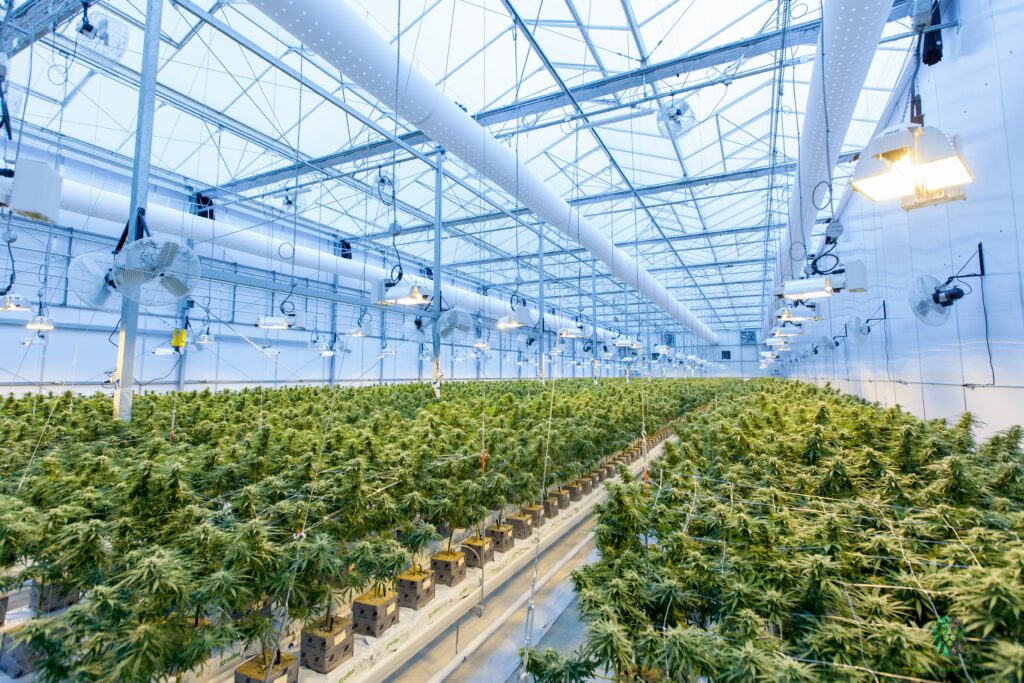The relationship between cannabis and biotechnology has been a tricky one. Given that cannabis has long since been prohibited, and still is in many places, there is a lack of complex biological research on the multifaceted plant and its genome. But times are changing, and advancements in cannabis biotechnology are finally being made.
When talking about cannabis genetics, there are a handful of up-and-coming biological topics that are currently relevant to the optimization of the growth and developmental stages. For example, molecular markers, cannabinoid chemotypes, secondary metabolites, and terpenes are all important biochemical aspects of cannabis that can alter certain genes.
Microscopic sequences of nucleic acids that create variations in DNA are called molecular markers. There are two main kinds of markers, restriction-site variation and repetitive DNA. These molecular markers are an up-and-coming research focus for scientists, especially pertaining to the biotechnological realm of the cultivation and growth of cannabis.
The application of molecular markers has broadened its scope immensely. Nowadays, these markers can be identified and used for a multitude of reasons, including but not limited to: origin of relationship, genetic diversity, sex determination, classification/identification of various genotypes, and chemotype-associated markers.

Sex determination is both important and useful for cannabis production. For medicinal/drug type cannabis, seeded flowers are not desirable. Rather, unfertilized female flowers are the most sought after, since they contain the highest levels of cannabinoids.
The sex of a cannabis plant is now able to be determined via multi-locus molecular markers. These markers contain several DNA particles specific to male cannabis only. Additionally, these male-specific molecular markers were found on the Y chromosome — which again, is specific to just male plants. Because of this coincidence, the male-specific markers have led to important understandings about the structure of cannabis sex chromosomes.
In addition, cannabinoid chemotypes are also an important biochemical characteristic that can be unveiled by molecular markers. When talking about chemotypes, this is referring to different varieties and kinds of cannabis plants based on their chemical constituents. Cannabinoid chemotype is essentially just a qualitative feature that is essential for cannabis breeders and producers.
It is important to both breeders and producers because the genotypes and concentrations of cannabinoids are both factors taken into account. However, the problem lies in the fact that it is difficult to distinguish between cannabinoid chemotypes in young cannabis plants in their early stages of growth. Both male and female plants are phenotypically, or physically, indistinguishable until the flowering stage.

The solution to this problem is through looking at molecular markers in the DNA of immature plants. These specific markers act as reliable ways to identify genotypes prior to the plant maturity stage, or when the cannabinoids’ biosynthesis has begun. Moreover, these markers are able to facilitate the early identification of cannabis, and also the seed selection based on their pharmaceuticals.
Another biotechnological tool being utilized in genetics is transcript profiling, or transcriptomics. This technique analyzes a type of RNA called messenger RNA, or mRNA. Under specific conditions, cells produce specific kinds of mRNA. These mRNA transcripts can then be translated into complex sets of gene-related data that tell a story.
The transcriptomic data obtained via cannabis are mostly produced and obtained from the small and sticky hair-like outgrowths on female plants, more formally known as trichomes. Recent studies have shown that these glandular trichomes contain RNAs that encode a large majority of the cannabinoid synthesis.
In addition to molecular markers and cannabinoids, small organic molecules called secondary metabolites (SMs) also have an important function in cannabis cultivation and production. Unlike primary metabolites and cannabinoids, SMs are not directly essential for the growth and development of cannabis. A prime example of a SM that is crucial to both the chemical diversity and end product of cannabis is that of terpenes.

Photo by Sean Cox / Edited by Reilly Sleater
Terpenes are aromatic compounds found in many plants. They wear many hats, therefore play various roles. Notably, cannabis terpenes’ most significant role is their ability to create major biochemical diversity. This diversity and difference in terpene concentration is what produces a multitude of different ‘strains’, or cultivars, in cannabis. Additionally, cannabis terpenes are responsible for characteristics such as aroma and flavor, which are both important and unique to each cannabis cultivar.
Cannabis produces more than 150 different kinds of terpenes. It is thought that these terpenes interact with various other cannabinoids to produce a biological phenomenon, commonly referred to as the entourage effect. This synergistic reaction is thought to produce different psychological and pharmacological effects. For example, certain cultivars make one sleepy and relaxed, whereas others make one energetic and uplifted. These effects can be taken into consideration and applied when treating various conditions, such as cancer, anxiety/depression, epilepsy, and even addiction.
Each strain, or cultivar, of cannabis contains different concentrations of terpenes. The difference in their terpene profiles can largely be attributed to variations of terpene synthase enzymes and how they alter gene expression over an entire gene family. From the biotechnological standpoint, the degree of differences between gene families across cultivars is still unclear. However, it is known that certain environmental factors and stressors can alter the enzymatic gene expression of cannabis during the growth and development stages. Non-enzymatic factors that also have the capability to alter expression have been identified, and include UV or thermal induced stress, as well as oxidative stress during processing or storage.
With that, non-enzymatic stressors are able to cause genetic modifications that yield more variations in both the terpene profile and whole entire genome of cannabis. This can be an issue that is necessary to take into consideration for both comprehensive scientific studies, and also for medicinal cannabis growers and cultivators. For scientific studies, controlled environments must be upheld to ensure that external factors are not impacting and/or skewing the factor that is being studied.
A thorough understanding of cannabis terpene concentration in reference to its gene family is an extremely useful resource, especially when pertaining to efforts for creating new varieties or cultivars. This is because terpene data consists of underlying information about the gene family. With this, complete characterization of a gene family via terpene data will facilitate the next generation of medicinal cannabis cultivation and breeding.
All in all, cannabis biochemical research and biotechnical development have both come a long way over the past few years. With methods such as transcriptomics and gene family mapping, cannabis breeding is able to become more precise. Certain genes and traits will be able to be narrowed in on and selected, or even deselected. Furthermore, biochemical tools like molecular markers and terpene profiles will continue to be solid tools for the future of cannabis and its application to medicine.
References:
Allen, K. D., Mckernan, K., Pauli, C., Torres, A., & Gaudino, R. (2019, September). Genomic characterization of the complete terpene synthase gene family from Cannabis sativa. PLoS ONE 14(9): e0222363. https://doi.org/10.1371/journal.pone.0222363
Booth, J. K., & Bohlmann, J. (2019, July). Terpenes in Cannabis sativa–From plant genome to humans. Science Direct – Plant Science, 284, 67-72. https://doi.org/10.1016/j.plantsci.2019.03.022.
Griffiths, A. J. F. (1970, January 1). Mapping with molecular markers. An Introduction to Genetic Analysis. 7th edition. https://www.ncbi.nlm.nih.gov/books/NBK21962/.
Hesami, M., Pepe, M., Alizadeh, M., Rakei, A., Baiton, A., & Phineas Jones, A. M. (2020). Recent advances in Cannabis Biotechnology. Industrial Crops and Products, 158, 113026. https://doi.org/10.1016/j.indcrop.2020.113026
Russo EB (2019). The Case for the Entourage Effect and Conventional Breeding of Clinical Cannabis: No “Strain,” No Gain. Front. Plant Sci. 9:1969. https://doi.org/10.3389/fpls.2018.01969



 Modern Canna
Modern Canna